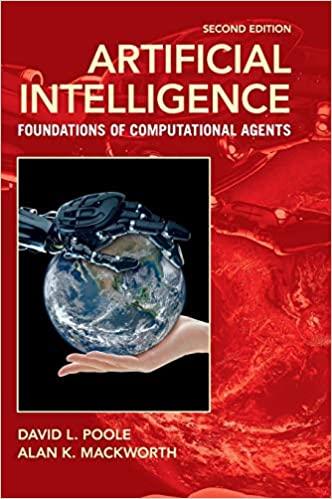1. Bickel et al. [1975] report on gender biases for graduate admissions at UC Berkeley. This example...
Question:
1. Bickel et al. [1975] report on gender biases for graduate admissions at UC Berkeley. This example is based on that case, but the numbers are fictional.
There are two departments, which we will call dept#1 and dept#2 (so Dept is a random variable with values dept#1 and dept#2) which students can apply to. Assume students apply to one, but not both. Students have a gender (male or female), and are either admitted or not. Consider the table of the percent of students in each category of Figure 8.33.
In the semantics of possible worlds, we will treat the students as possible worlds, each with the same measure.
(a) What is P(Admitted = true ∣ Gender = male)?
What is P(Admitted = true ∣ Gender = female)?
Which gender is more likely to be admitted?
(b) What is P(Admitted = true ∣ Gender = male, Dept = dept#1)?
What is P(Admitted = true ∣ Gender = female, Dept = dept#1)?
Which gender is more likely to be admitted to dept#1?
(c) What is P(Admitted = true ∣ Gender = male, Dept = dept#2)?
What is P(Admitted = true ∣ Gender = female, Dept = dept#2)?
Which gender is more likely to be admitted to dept#2?
(d) This is an instance of Simpson’s paradox. Why is it a paradox? Explain why it happened in this case.
(e) Give another scenario where Simpson’s paradox occurs.
Step by Step Answer:

Artificial Intelligence Foundations Of Computational Agents
ISBN: 9781107195394
2nd Edition
Authors: David L. Poole, Alan K. Mackworth






